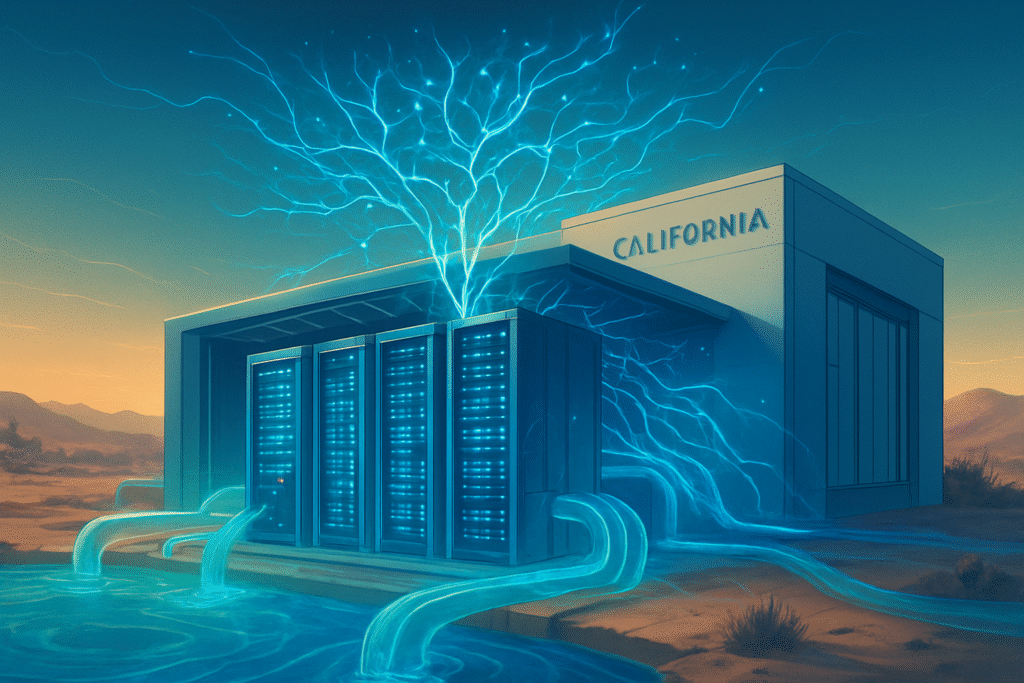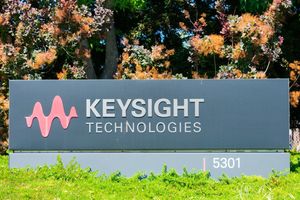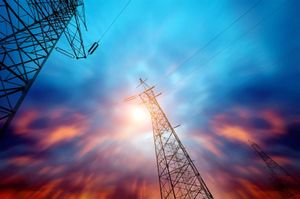
The relentless ascent of Artificial Intelligence (AI) is ushering in an era of unprecedented computational power, but this technological marvel comes with a growing and increasingly urgent environmental cost. As of November 2025, California, a global epicenter for AI innovation, finds itself at the forefront of a critical challenge: the explosive energy and water demands of the data centers that power AI's rapid expansion. This escalating consumption is not merely an operational footnote; it is a pressing issue straining the state's electrical grid, exacerbating water scarcity in drought-prone regions, and raising profound questions about the sustainability of our AI-driven future.
The immediate significance of this trend cannot be overstated. AI models, particularly large language models (LLMs), are ravenous consumers of electricity, requiring colossal amounts of power for both their training and continuous operation. A single AI query, for instance, can demand nearly ten times the energy of a standard web search, while training a major LLM like GPT-4 can consume as much electricity as 300 American homes in a year. This surge is pushing U.S. electricity consumption by data centers to unprecedented levels, projected to more than double from 183 terawatt-hours (TWh) in 2024 to 426 TWh by 2030, representing over 4% of the nation's total electricity demand. In California, this translates into immense pressure on an electrical grid not designed for such intensive workloads, with peak power demand forecasted to increase by the equivalent of powering 20 million more homes by 2040, primarily due to AI computing. Utilities are grappling with numerous applications for new data centers requiring substantial power, necessitating billions in new infrastructure investments.
The Technical Underpinnings of AI's Insatiable Appetite
The technical reasons behind AI's burgeoning resource footprint lie deep within its computational architecture and operational demands. AI data centers in California, currently consuming approximately 5,580 gigawatt-hours (GWh) of electricity annually (about 2.6% of the state's 2023 electricity demand), are projected to see this figure double or triple by 2028. Pacific Gas & Electric (NYSE: PCG) anticipates a 3.5 GW increase in data center energy demand by 2029, with more than half concentrated in San José.
This intensity is driven by several factors. AI workloads, especially deep learning model training, rely heavily on Graphics Processing Units (GPUs) and Tensor Processing Units (TPUs) rather than traditional Central Processing Units (CPUs). These specialized processors, crucial for the massive matrix multiplications in neural networks, consume substantially more power; training-optimized GPUs like the NVIDIA (NASDAQ: NVDA) A100 and H100 SXM5 can draw between 250W and 700W. Consequently, AI-focused data centers operate with significantly higher power densities, often exceeding 20 kW per server rack, compared to traditional data centers typically below 10 kW per rack. Training large AI models involves iterating over vast datasets for weeks or months, requiring GPUs to operate at near-maximum capacity continuously, leading to considerably higher energy draw. Modern AI training clusters can consume seven to eight times more energy than typical computing workloads.
Water consumption, primarily for cooling, is equally stark. In 2023, U.S. data centers directly consumed an estimated 17 billion gallons of water. Hyperscale data centers, largely driven by AI, are projected to consume between 16 billion and 33 billion gallons annually by 2028. A medium-sized data center can consume roughly 110 million gallons of water per year, equivalent to the annual usage of about 1,000 households. Each 100-word AI prompt is estimated to consume approximately one bottle (519 milliliters) of water, with more recent studies indicating 10 to 50 ChatGPT queries consume about two liters. Training the GPT-3 model in Microsoft's (NASDAQ: MSFT) U.S. data centers directly evaporated an estimated 700,000 liters of clean freshwater, while Google's (NASDAQ: GOOGL) data centers in the U.S. alone consumed an estimated 12.7 billion liters in 2021.
The AI research community and industry experts are increasingly vocal about these technical challenges. Concerns range from the direct environmental impact of carbon emissions and water scarcity to the strain on grid stability and the difficulty in meeting corporate sustainability goals. A significant concern is the lack of transparency from many data center operators regarding their resource usage. However, this pressure is also accelerating innovation. Researchers are developing more energy-efficient AI hardware, including specialized ASICs and FPGAs, and focusing on software optimization techniques like quantization and pruning to reduce computational requirements. Advanced cooling technologies, such as direct-to-chip liquid cooling and immersion cooling, are being deployed, offering significant reductions in water and energy use. Furthermore, there's a growing recognition that AI itself can be a part of the solution, leveraged to optimize energy grids and enhance the energy efficiency of infrastructure.
Corporate Crossroads: AI Giants and Startups Navigate Sustainability Pressures
The escalating energy and water demands of AI data centers in California are creating a complex landscape of challenges and opportunities for AI companies, tech giants, and startups alike, fundamentally reshaping competitive dynamics and market positioning. The strain on California's infrastructure is palpable, with utility providers like PG&E anticipating billions in new infrastructure spending. This translates directly into increased operational costs for data center operators, particularly in hubs like Santa Clara, where data centers consume 60% of the municipal utility's power.
Companies operating older, less efficient data centers or those relying heavily on traditional evaporative cooling systems face significant headwinds due to higher water consumption and increased costs. AI startups with limited capital may find themselves at a disadvantage, struggling to afford the advanced cooling systems or renewable energy contracts necessary to meet sustainability benchmarks. Furthermore, a lack of transparency regarding environmental footprints can lead to reputational risks, public criticism, and regulatory scrutiny. California's high taxes and complex permitting processes, coupled with existing moratoria on nuclear power, are also making other states like Texas and Virginia more attractive for data center development, potentially leading to a geographic diversification of AI infrastructure.
Conversely, tech giants like Alphabet (NASDAQ: GOOGL) (Google), Microsoft (NASDAQ: MSFT), Amazon (NASDAQ: AMZN), and Meta Platforms (NASDAQ: META), with their vast resources, stand to benefit. These companies are already investing heavily in sustainable data center operations, piloting advanced cooling technologies that can reduce water consumption by up to 90% and improve energy efficiency. Their commitments to "water positive" initiatives, aiming to replenish more water than they consume by 2030, also enhance their brand image and mitigate water-related risks. Cloud providers optimizing AI chips and software for greater efficiency will gain a competitive edge by lowering their environmental footprint and operational costs. The demand for clean energy and sustainable data center solutions also creates significant opportunities for renewable energy developers and innovators in energy efficiency, as well as companies offering water-free cooling systems like Novva Data Centers or river-cooled solutions like Nautilus Data Technologies.
The competitive implications are leading to a "flight to quality," where companies offering "California-compliant" AI solutions with strong sustainability practices gain a strategic advantage. The high capital expenditure for green infrastructure could also lead to market consolidation, favoring well-resourced tech giants. This intense pressure is accelerating innovation in energy-efficient hardware, software, and cooling technologies, creating new market leaders in sustainable AI infrastructure. Companies are strategically positioning themselves by embracing transparency, investing in sustainable infrastructure, marketing "Green AI" as a differentiator, forming strategic partnerships, and advocating for supportive policies that incentivize sustainable practices.
Broader Implications: AI's Environmental Reckoning
The escalating energy and water demands of AI data centers in California are not isolated incidents but rather a critical microcosm of a burgeoning global challenge, carrying significant environmental, economic, and social implications. This issue forces a re-evaluation of AI's role in the broader technological landscape and its alignment with global sustainability trends. Globally, data centers consumed 4.4% of U.S. electricity in 2023, a number that could triple by 2028. By 2030-2035, data centers could account for 20% of global electricity use, with AI workloads alone potentially consuming nearly 50% of all data center energy worldwide by the end of 2024.
The environmental impacts are profound. The massive electricity consumption, often powered by fossil fuels, significantly contributes to greenhouse gas emissions, exacerbating climate change and potentially delaying California's transition to renewable energy. The extensive use of water for cooling, particularly evaporative cooling, puts immense pressure on local freshwater resources, especially in drought-prone regions, creating competition with agriculture and other essential community needs. Furthermore, the short lifespan of high-performance computing components in AI data centers contributes to a growing problem of electronic waste and resource depletion, as manufacturing these components requires the extraction of rare earth minerals and other critical materials.
Economically, the rising electricity demand can lead to higher bills for all consumers and necessitate billions in new infrastructure spending for utilities. However, it also presents opportunities for investment in more efficient AI models, greener hardware, advanced cooling systems, and renewable energy sources. Companies with more efficient AI implementations may gain a competitive advantage through lower operational costs and enhanced sustainability credentials. Socially, the environmental burdens often disproportionately affect marginalized communities located near data centers or power plants, raising environmental justice concerns. Competition for scarce resources like water can lead to conflicts between different sectors and communities.
The long-term concerns for AI development and societal well-being are significant. If current patterns persist, AI's resource demands risk undermining climate targets and straining resources across global markets, leading to increased scarcity. The computational requirements for training AI models are doubling approximately every five months, an unsustainable trajectory. This period marks a critical juncture in AI's history, fundamentally challenging the notion of "dematerialized" digital innovation and forcing a global reckoning with the environmental costs. While previous technological milestones, like the industrial revolution, also consumed vast resources, AI's rapid adoption and pervasive impact across nearly every sector present an unprecedented scale and speed of demand. The invisibility of its impact, largely hidden within "the cloud," makes the problem harder to grasp despite its massive scale. However, AI also offers a unique duality: it can be a major resource consumer but also a powerful tool for optimizing resource use in areas like smart grids and precision agriculture, potentially mitigating some of its own footprint if developed and deployed responsibly.
Charting a Sustainable Course: Future Developments and Expert Predictions
The future trajectory of AI's energy and water demands in California will be shaped by a confluence of technological innovation, proactive policy, and evolving industry practices. In the near term, we can expect wider adoption of advanced cooling solutions such as direct-to-chip cooling and liquid immersion cooling, which can reduce water consumption by up to 90% and improve energy efficiency. The development and deployment of more energy-efficient AI chips and semiconductor-based flash storage, which consumes significantly less power than traditional hard drives, will also be crucial. Ironically, AI itself is being leveraged to improve data center efficiency, with algorithms optimizing energy usage in real-time and dynamically adjusting servers based on workload.
On the policy front, the push for greater transparency and reporting of energy and water usage by data centers will continue. While California Governor Gavin Newsom vetoed Assembly Bill 93, which would have mandated water usage reporting, similar legislative efforts, such as Assembly Bill 222 (mandating transparency in energy usage for AI developers), are indicative of the growing regulatory interest. Incentives for sustainable practices, like Senate Bill 58's proposed tax credit for data centers meeting specific carbon-free energy and water recycling criteria, are also on the horizon. Furthermore, state agencies are urged to improve forecasting and coordinate with developers for strategic site selection in underutilized grid areas, while the California Public Utilities Commission (CPUC) is considering special electrical rate structures for data centers to mitigate increased costs for residential ratepayers.
Industry practices are also evolving. Data center operators are increasingly prioritizing strategic site selection near underutilized wastewater treatment plants to integrate non-potable water into operations, and some are considering naturally cold climates to reduce cooling demands. Companies like Digital Realty (NYSE: DLR) and Google (NASDAQ: GOOGL) are actively working with local water utilities to use recycled or non-potable water. Operational optimization, focusing on improving Power Usage Effectiveness (PUE) and Water Usage Effectiveness (WUE) metrics, is a continuous effort, alongside increased collaboration between technology companies, policymakers, and environmental advocates.
Experts predict a substantial increase in energy and water consumption by data centers in the coming years, with AI's global energy needs potentially reaching 21% of all electricity usage by 2030. Stanford University experts warn that California has a narrow 24-month window to address permitting, interconnection, and energy forecasting challenges, or it risks losing its competitive advantage in AI and data centers to other states. The emergence of nuclear power as a favored energy source for AI data centers is also a significant trend to watch, with its 24/7 reliable, clean emissions profile. The overarching challenge remains the exponential growth of AI, which is creating unprecedented demands on infrastructure not designed for such intensive workloads, particularly in water-stressed regions.
A Pivotal Moment for Sustainable AI
The narrative surrounding AI's escalating energy and water demands in California represents a pivotal moment in the technology's history. No longer can AI be viewed as a purely digital, ethereal construct; its physical footprint is undeniable and rapidly expanding. The key takeaways underscore a critical dichotomy: AI's transformative potential is inextricably linked to its substantial environmental cost, particularly in its reliance on vast amounts of electricity and water for data center operations. California, as a global leader in AI innovation, is experiencing this challenge acutely, with its grid stability, water resources, and climate goals all under pressure.
This development marks a significant turning point, forcing a global reckoning with the environmental sustainability of AI. It signifies a shift where AI development must now encompass not only algorithmic prowess but also responsible resource management and infrastructure design. The long-term impact will hinge on whether this challenge becomes a catalyst for profound innovation in green computing and sustainable practices or an insurmountable barrier that compromises environmental well-being. Unchecked growth risks exacerbating resource scarcity and undermining climate targets, but proactive intervention can accelerate the development of more efficient AI models, advanced cooling technologies, and robust regulatory frameworks.
In the coming weeks and months, several key indicators will reveal the direction of this critical trajectory. Watch for renewed legislative efforts in California to mandate transparency in data center resource usage, despite previous hurdles. Monitor announcements from utilities like PG&E and the California ISO (CAISO) regarding infrastructure upgrades and renewable energy integration plans to meet surging AI demand. Pay close attention to major tech companies as they publicize their investments in and deployment of advanced cooling technologies and efforts to develop more energy-efficient AI chips and software. Observe trends in data center siting and design, noting any shift towards regions with abundant renewable energy and water resources or innovations in water-efficient cooling. Finally, look for new industry commitments and standards for environmental impact reporting, as well as academic research providing refined estimates of AI's footprint and proposing innovative solutions. The path forward for AI's sustainable growth will be forged through unprecedented collaboration and a collective commitment to responsible innovation.
This content is intended for informational purposes only and represents analysis of current AI developments.
TokenRing AI delivers enterprise-grade solutions for multi-agent AI workflow orchestration, AI-powered development tools, and seamless remote collaboration platforms.
For more information, visit https://www.tokenring.ai/.





